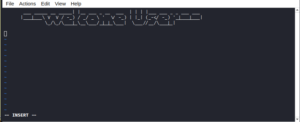Jupyter Notebook is one of the most powerful tools available today for interactive computing. It combines code, visualizations, and rich text in a single document, making it an essential tool in the modern programming ecosystem.
In this blog post, we will cover:
- What is Jupyter Notebook?
- Why Jupyter Notebook is Important
- How to Install Jupyter Notebook
- Common Use Cases of Jupyter Notebook
What is Jupyter Notebook?
Jupyter Notebook is an open-source web application that allows you to create and share documents that contain: Live code, Equations, Visualizations and Narrative text
Originally developed for Python (hence the name, derived from Julia, Python, and R), Jupyter now supports over 40 programming languages.
Why Jupyter Notebook is Important
1. Interactive Coding
You can write and execute code in chunks (called cells), making it easier to test, debug, and iterate quickly.
2. Rich Media Integration
You can embed plots, images, videos, LaTeX equations, and more—all in one notebook.
3. Reproducible Research
Notebooks can be saved and shared easily, which allows others to reproduce and validate your work.
4. Educational Tool
It is excellent for teaching programming, mathematics, data science, and machine learning because it combines explanation with executable code.
5. Visualization-Driven Development
Powerful integration with visualization libraries like Matplotlib, Seaborn, Plotly, and Bokeh makes it ideal for exploratory data analysis.
How to Install Jupyter Notebook
There are 2 main methods of installing Jupyter notebook
Method 1: Install via Anaconda
- Go to the Anaconda Download page
- Download the installer for your OS (Windows, macOS, Linux)
- Run the installer and follow the prompts
- After installation, launch Jupyter Notebook:
jupyter notebookThis will open a local server in your browser.
Method 2: Install via pip
To install jupyter notebook, ensure that python is installed on your system, then run:
pip install notebookThen start it by running:
jupyter notebookCommon Use Cases of Jupyter Notebook
1. Data Science and Analysis
Import and clean datasets, explore data using Pandas, visualize results with Matplotlib or Seaborn.
2. Machine Learning
Build and train models using frameworks like Scikit-learn, TensorFlow, or PyTorch within the same environment.
3. Exploratory Data Analysis (EDA)
Jupyter is perfect for quick EDA where you test hypotheses and visualize data on the fly.
4. Education and Training
Used by instructors to teach concepts in real-time with interactive examples.
5. Documentation and Reporting
Combine code, results, charts, and notes to create well-documented reports that are easy to share and understand.
Jupyter notebook Markdown
# 📘 Getting Started with Jupyter Notebook
### Installation, Importance, and Use Cases
Jupyter Notebook is one of the most powerful and popular tools for interactive computing. It allows you to write and execute code, visualize data, and combine it all with rich-text annotations in one document.
In this notebook, we’ll cover:
- ✅ What is Jupyter Notebook?
- 🌟 Why Jupyter Notebook is Important
- 💻 How to Install Jupyter Notebook
- 🛠️ Common Use Cases of Jupyter Notebook### Method 2: Using pip (If Python is Already Installed)
Install using pip:
```pythonpip install notebook```Steps to Link a Virtual Environment with Jupyter Notebook
Create and activate the virtual environment.
#create virtualenv
python -m venv venv-name
# activate on macOS/Linux
source venv-name/bin/activate
#Activate on windows
venv-name\Scripts\activateInstall ipykernel Inside the Virtual Environment
This package allows your virtualenv to be used as a Jupyter kernel:
pip install ipykernelAdd the Virtual Environment as a Kernel
Use the following command:
python -m ipykernel install --user --name=venv-name --display-name "Python (venv-name)"Where:
–name: The system name of the kernel (must be unique)
–display-name: How it appears in the Jupyter Notebook interface (friendly name)
Launch Jupyter Notebook
While still connected to the virtual environment; run the following
jupyter notebookThen in the notebook interface:
- Create a new notebook
- Click Kernel > Change kernel
- Choose “Python (myenv)”
List or Remove Kernels
List all available Jupyter kernels:
jupyter kernelspec listRemove a kernel:
jupyter kernelspec uninstall yourenvEfficient Data Representation and Visualization in Jupyter Using Pandas
Launch Jupyter notebook and open a new or an existing jupyter notebook file. Add the following to import the required libraries.
import pandas as pd
import matplotlib.pyplot as plt
import seaborn as sns
%matplotlib inlineLoad a Dataset
We will use seaborn inbult dataset.
# Option A: Using seaborn's built-in dataset
df = sns.load_dataset('titanic')
# Option B: Load your own CSV
# df = pd.read_csv("your_file.csv")
df.head()
#Other user cases: .head(), .info(), .describe()Visualizations with Matplotlib / Seaborn
# Bar plot of passengers per class
sns.countplot(x='class', data=df)
plt.title("Number of Passengers by Class")# Distribution of age
sns.histplot(df['age'], kde=True)
plt.title("Age Distribution")# Survival rate by gender
sns.barplot(x='sex', y='survived', data=df)
plt.title("Survival Rate by Gender")In conclusion, Jupyter Notebook remains an essential tool for anyone working with Python, specifically in the fields of data science, machine learning, and research. Its ability to combine code, output, and rich text in a single document makes it both powerful and user-friendly.
Make a donation to support us
Web Hosting and email hosting Packages
Related Articles:






